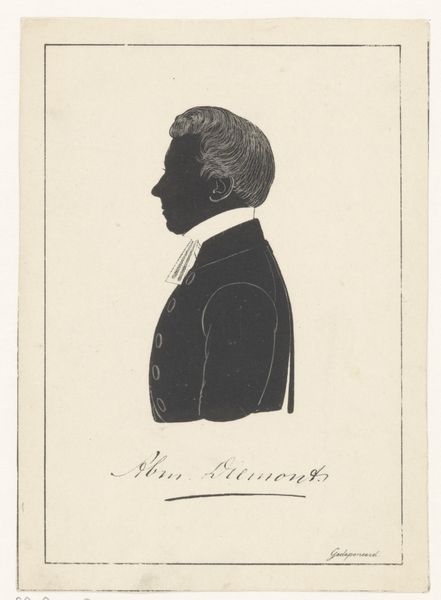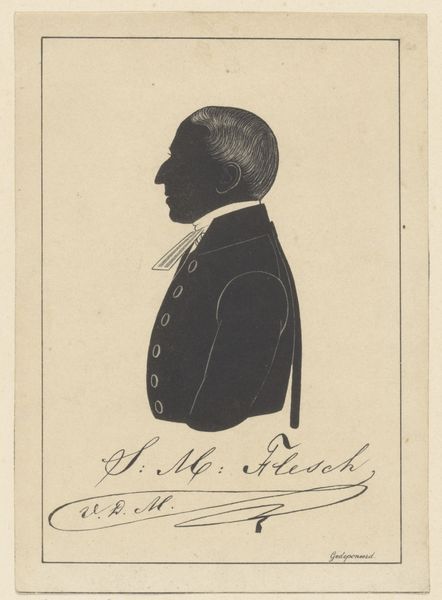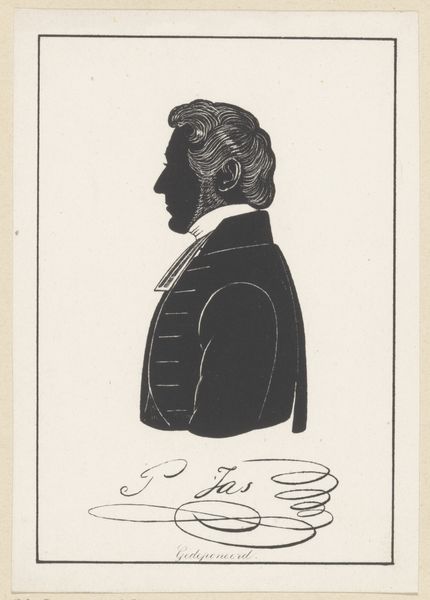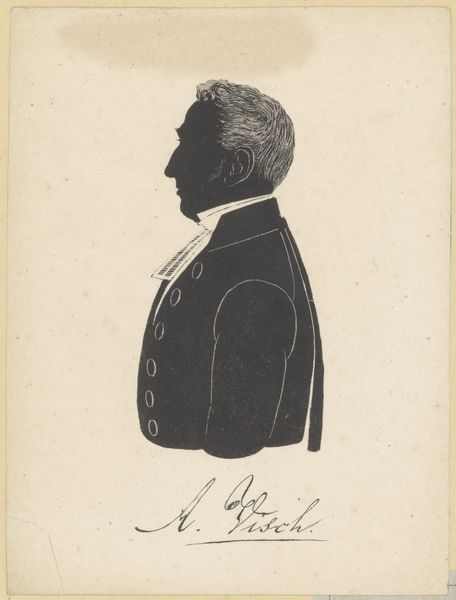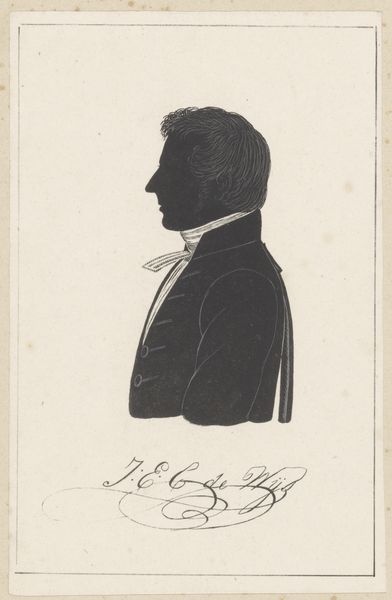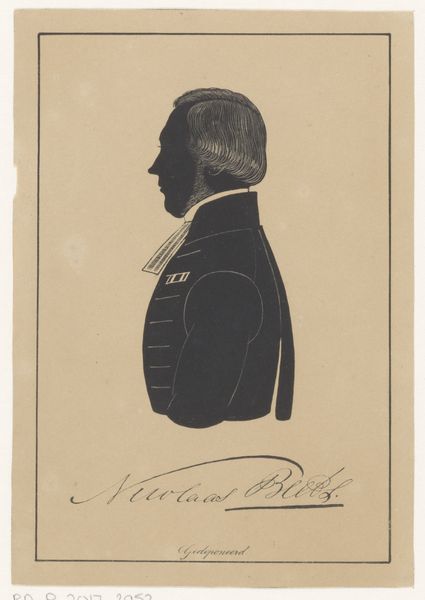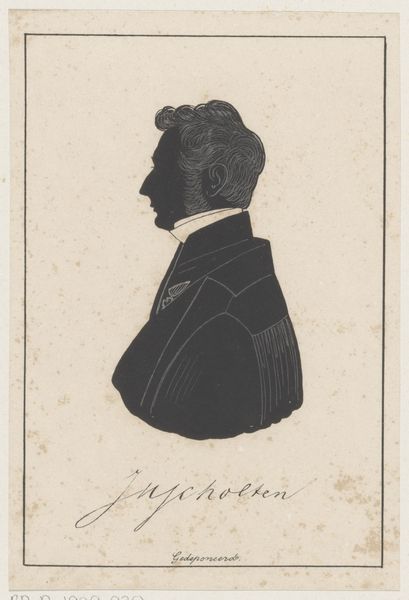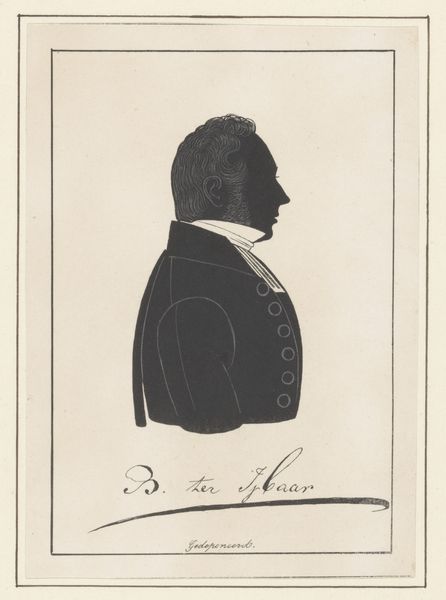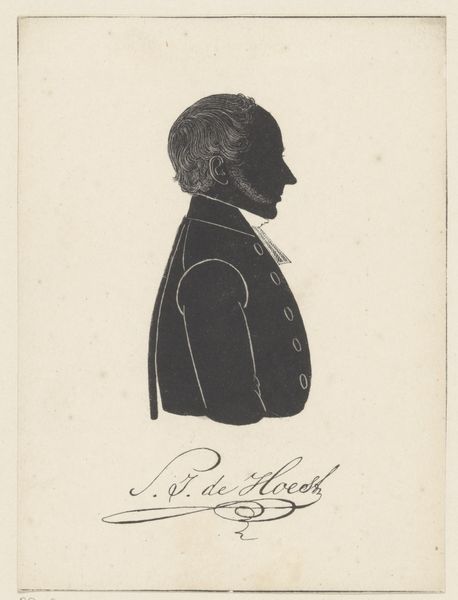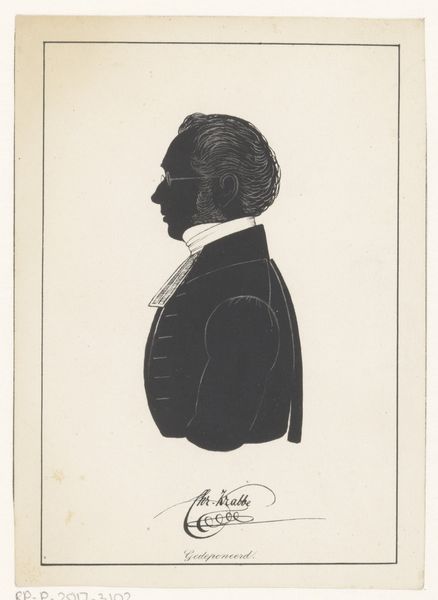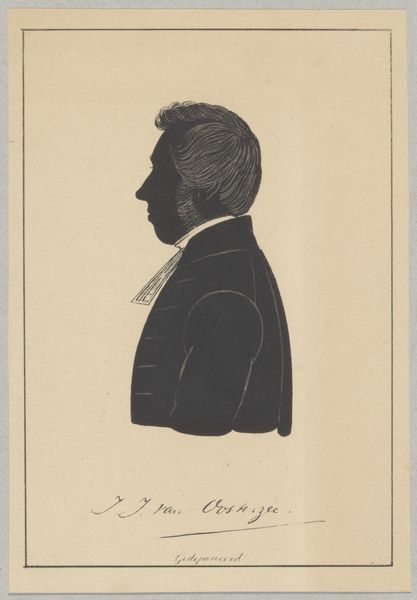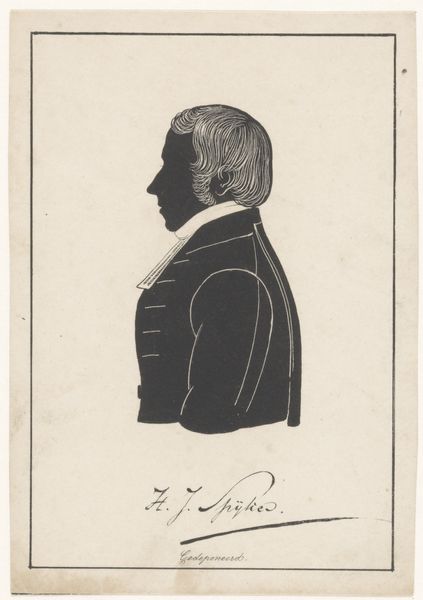
Silhouetportret van Frederik Willem van Andel Weijers 1809 - 1848
0:00
0:00
drawing, paper, pencil
#
portrait
#
drawing
#
old engraving style
#
figuration
#
paper
#
form
#
pencil
#
line
#
academic-art
#
miniature
Dimensions: height 150 mm, width 106 mm
Copyright: Rijks Museum: Open Domain
Curator: Pieter Barbiers the fourth created this striking silhouette portrait of Frederik Willem van Andel Weijers sometime between 1809 and 1848. It's rendered with pencil on paper and currently resides here at the Rijksmuseum. What’s your immediate impression? Editor: It's so stark. The complete lack of shading beyond the dense black silhouette makes it feel austere, almost foreboding. I immediately focus on the meticulous detail etched into the hair, a contrast to the flat darkness of the coat. Curator: Absolutely, and it's worth considering silhouette portraits as a material practice. They became incredibly popular as a more affordable alternative to painted miniatures. This piece exemplifies how artists like Barbiers navigated those economic and social pressures. Did they view this form as ‘lesser’, as merely craft? The level of skill argues otherwise. Editor: Precisely! While functional, the image evokes more than just simple recognition of the man. The artist emphasizes certain traits– the almost aggressive upward swoop of hair, the defined line of his jaw– all point towards established symbols of masculinity in that era. Curator: Interesting. Consider the paper itself too. The tooth of the paper and fineness of the artist's pencil contributed a great deal to that impression. Were the paper expensive, made by a certain maker? Did its sourcing come from within the artist's community, linking the support to social context and Barbiers artistic project? These material elements aren’t passive, right? Editor: I agree entirely. We need to see this silhouette in the context of its visual language and history. A silhouette isn't a neutral representation; it's loaded with cultural implications regarding status, remembrance, even absence. How would the sitter's social circle perceive a stark black silhouette against the colourful world they occupied? Curator: These commissioned pieces supported artistic practices within and beyond academies. What did Weijers do that afforded the leisure of sitting to have his portrait rendered in this manner? Editor: Looking at the meticulous rendering of the hair and attire, there's this tension between a seemingly simple outline and the dense cultural meaning woven within. I begin to see this silhouette less as a straightforward portrait and more as a carefully constructed icon of its time. Curator: Thinking about its purpose and the materials used, combined with a sophisticated patron culture helps to broaden its context for us. Editor: Indeed. It transforms how we perceive a simple image; no longer just a likeness, but a document loaded with symbols and insight into its era.
Comments
No comments
Be the first to comment and join the conversation on the ultimate creative platform.
